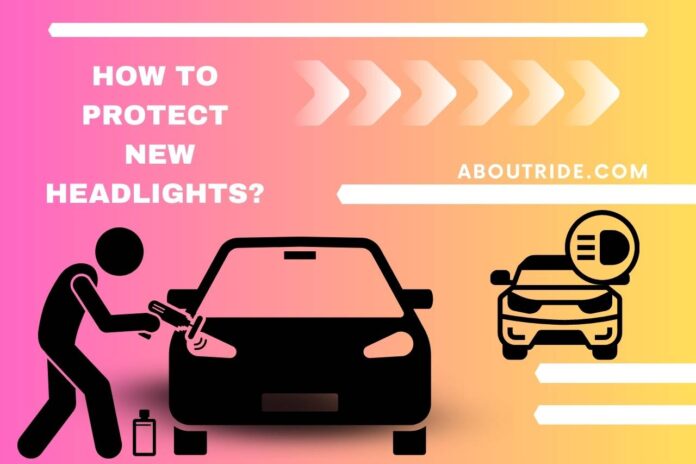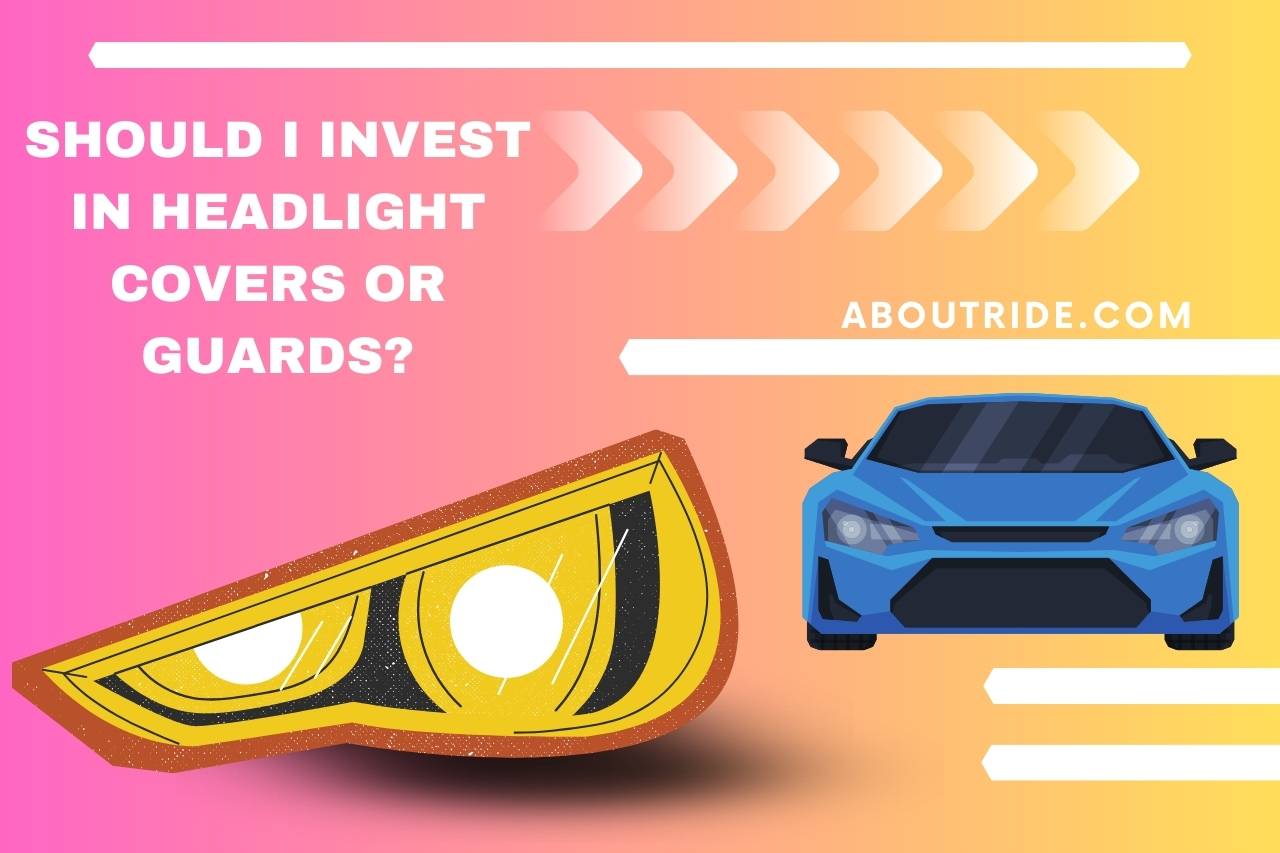As you install new headlights and admire their enhanced visibility to your vehicle, it’s crucial to consider their protection. Headlights are exposed to various environmental factors that can gradually diminish their performance and aesthetics. Protecting your new headlights ensures their longevity and maintains optimal lighting conditions on the road. In this article, we will explore effective methods to shield your new headlights from damage caused by UV rays, debris, scratches, and weather elements. You can keep your headlights looking clear, bright, and functional for years to come by implementing the right protective measures.
Why is It Important to Protect New Headlights?
Protecting new headlights is important for several reasons. Firstly, headlights play a crucial role in improving road safety. They enhance visibility, especially in areas with poor or no roadside illumination, reducing the risk of accidents.
You ensure they remain clear and bright, maintaining their optimal performance and providing a margin of protection by properly protecting headlights.
Headlights contribute to daytime visibility, making your vehicle more visible to other motorists. It is particularly important in regions where headlight use is always mandated, as it helps prevent accidents by ensuring your presence is easily noticeable.
Headlights are a crucial aspect of its safety features and parts for the vehicle’s brakes, tires, airbags, and electronic warning systems. Ineffective headlight maintenance may compromise your and other drivers’ safety by reducing effectiveness.
Giving headlights the attention they deserve is essential, as they are often overlooked during routine vehicle maintenance. While drivers routinely check items like tires, oil, washer fluid, windshields, and alignment, neglecting headlight care can be dangerous. Regularly protecting and maintaining headlights ensures they remain in optimal condition, providing reliable visibility and contributing to overall road safety.
What are the Common Causes of Headlight Damage?
Several common causes of headlight damage can result in malfunctioning or broken headlights.
Burned-out Bulbs – One of the most frequent causes is simply a burned-out bulb. Over time, the filament inside the bulb can wear out, leading to a loss of light.
Malfunctioning Headlight Switch – The switch near your steering wheel that controls your headlights can experience malfunctions, preventing them from turning on or off properly.
- Corroded Socket – Corrosion can occur within the socket that holds the headlight bulb, causing a poor connection and flickering or dim headlights.
- HID Generator Failing – High-Intensity Discharge (HID) headlights use a generator to produce intense light. If the generator fails, it can cause the headlights to stop working.
- Headlight Fog – Moisture can accumulate inside the headlight housing, leading to foggy or hazy headlights that reduce visibility.
- Faulty Wiring – Damaged or faulty wiring can interrupt the flow of electricity to the headlights causing them to fail.
- Blown a Fuse – If a fuse related to the headlights blows, it can result in a complete loss of headlight function.
- Damaged Relay – A damaged or malfunctioning relay that controls the power supply to the headlights can cause them to stop working.
These common causes of headlight damage highlight the importance of regular maintenance, including bulb replacements, checking electrical connections, and addressing any issues with switches, wiring, fuses, and relays. Proper care and prompt repairs can help ensure that your headlights remain functional, providing the necessary visibility for safe driving.
How Can I Prevent Scratches on New Headlights?
You can take a few steps to prevent scratches on new headlights. Basic cleaning methods may be sufficient for minor scratches. Additional steps are necessary to address the issue of deep scratches effectively.
To begin, gather several sheets of grit sandpaper and wet them. Apply a compound solution to the sandpaper before sanding.
Use these sheets to smooth over the scratched section. Switching to a new sheet as needed. This process helps to remove the scratch gradually.
If the scratch persists, you can further buff the area where the compound was applied. This final step aids in filling and sealing the scratch and providing a smoother surface.
It’s recommended to use a scratch-resistant compound regularly to avoid scratches altogether. This compound acts as a protective layer on the headlights, minimizing the risk of scratches from minor impacts or debris.
Applying a coat of wax to the headlights can provide further protection. The wax creates a barrier that helps prevent road debris from sticking to the plastic surface, reducing the chances of scratches.
You can maintain the clarity and integrity of your new headlights by implementing these preventive measures and addressing scratches promptly.
Regular maintenance and protective measures help ensure your headlights remain in optimal condition, providing clear visibility and enhancing the overall appearance of your vehicle.
How to Protect Headlights from Yellowing?
Follow these steps to protect your headlights from yellowing.
Clean your headlights regularly to remove accumulated dirt and grime. It can contribute to discoloration over time.
Use high-quality lightbulbs that emit the appropriate amount of light without excessive heat because heat can accelerate yellowing.
Avoid parking your car in direct sunlight for extended periods. Long-term UV exposure can produce fading and discoloration.
Apply a layer of car wax to the headlights every few washes. The wax serves as a shield from the sun’s damaging UV radiation.
Consider using a sealant specifically designed for headlights if additional protection is desired. The sealant creates a barrier that helps prevent oxidation and yellowing.
Be cautious when using cleaners on your headlights. Harsh chemicals and abrasive products can damage the protective coating making them more susceptible to yellowing. Use gentle cleaning solutions.
Another option is to apply Lamin-x headlight film or Universal Sheets. These protective films can shield the headlights from UV rays and environmental damage and help to prevent yellowing.
By following these things, you can extend the lifespan of your headlights and maintain their clarity and brightness, reducing the likelihood of yellowing and discoloration over time.
How to Keep Headlights from Oxidizing?
Follow these steps to prevent headlights from oxidizing.
Apply a sealant specifically designed for headlights using a foam applicator. Before driving your car, allow the sealant dry for at least 24 hours.
You can also use a UV protection spray to shield the headlights from oxidation.
Ensure you apply wax to the reflectors and headlights when waxing your car. Consider asking a professional to hand polish the headlights with a paint cleaner. Avoid using harsh cleaners and abrasive products that can damage the protective coating on the headlights.
Park your vehicle in a shady area whenever possible. If you have a garage, park your car inside to shield the headlights from direct sunlight.
Regularly clean the lens covers, wash them inside out, and polish the headlights using a microfiber towel. Keep your headlights clean by regularly washing them and avoiding the buildup of dirt and grime. Park your car in a cool or dry place, away from direct sunlight, which can accelerate oxidation whenever feasible.
You can help prolong the lifespan of your headlights and maintain their clarity and performance by reducing the chances of oxidation by implementing these preventative measures.
Should I Invest in Headlight Covers or Guards?
Investing in headlight covers or guards is a wise decision. Headlights can be expensive to replace, making it worthwhile to protect them.
Headlight covers serve as a functional barrier, shielding the headlights from elements like road debris, stones, bugs, and harsh weather conditions.
They help prevent scratches, cracks, and discoloration, prolonging the lifespan of your headlights. Headlight covers save you from costly repairs or replacements by adding an extra layer of protection.
It is a practical investment that ensures your headlights remain in optimal condition providing clear visibility and enhancing the overall aesthetics of your vehicle.
What is the Best Protectant for Headlights?
The best approach involves a combination of cleaning and applying a sealant or coating when protecting headlights. First, completely clean the headlight lenses to remove dust and grime. This step ensures optimal adhesion of the protective product.
Next, consider sanding the headlights if they have significant oxidation or scratches. This procedure makes a smooth surface for the sealer or coating to adhere to while also helping to remove the damaged layer.
Finally, apply a high-quality sealant or coating designed for headlights to provide long-lasting protection against UV rays, oxidation, discoloration, and environmental damage. It is keeping your headlights looking clear and new.
Watch this one,
Video Credits – Chemical Guys
You May Also Like

